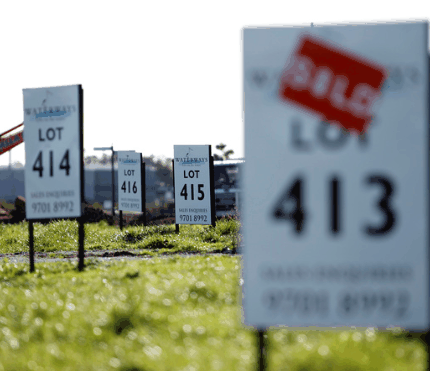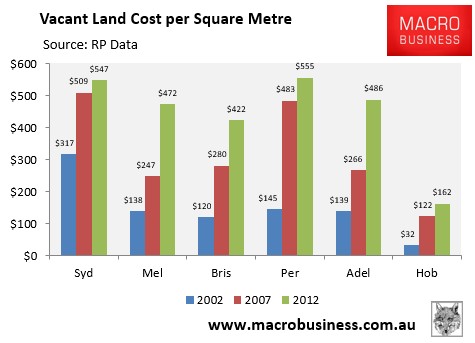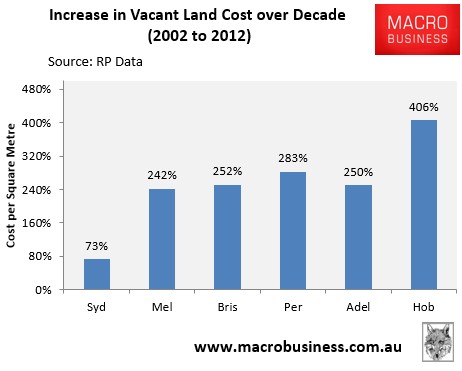
Today’s speech by RBA Assistant Governor, Philip Lowe, made some interesting observations on the interaction between poor transport infrastructure and housing (read land) costs in his speech today:
Another less obvious effect of transportation systems is on the cost of housing. There are many factors that contribute to the cost of housing, but among these is the nature of a city’s transportation system. When housing prices are high, it is largely because land prices are high. And, land prices are high when there is a ‘shortage’ of well-located land. We cannot do much about the physical supply of land, but investment in transportation infrastructure – by making it easier to move around the city – can increase the supply of ‘well-located’ land. And when supply increases, prices adjust. This means that underinvestment in transportation networks tends to put upward pressure on housing costs.
First, let me state that I agree wholeheartedly with part of Lowe’s summation – that inadequate transport infrastructure increases travel times and reduces the amount of desirable housing options, thereby pushing-up the cost of homes in desirable locations (e.g. the inner city).
That said, his suggestion that “land prices are high when there is a ‘shortage’ of well-located land” and that “we cannot do much about the physical supply of land” is a cop-out and patently untrue.
As we all know, urban land price inflation has been rampant not just in the inner and middle suburbs, but also on the fringe of our cities in places that few would consider is either desirable, well located, or well connected to transport. This rampant inflation is illustrated clearly in the below charts from RP Data, which shows fringe vacant lot prices escalating in the decade to 2012 across the whole of Australia:


And while we cannot do much about the absolute quantity of land – that is indeed fixed – policy makers have many tools at their disposal to ensure that the supply of urban land is increased by removing artificial constraints such as growth boundaries and restrictive zoning, by improving development approval processes, and reducing the cost of producing housing lots by lowering upfront taxes on development.
In 2006, former RBA Governor, Ian McFarlane, acknowledged that growth control measures have resulted in higher house prices and declining affordability:
“Why has the price of an entry-level new home gone up as much as it has? Why is it not like it was in 1951 when my parents moved to East Bentleigh, which was the fringe of Melbourne at that stage, and where they were able to buy a block of land very cheaply and put a house on it very cheaply? Why is that not the case now? I think it is pretty apparent now that reluctance to release new land plus the new approach whereby the purchaser has to pay for all the services up front – the sewerage, the roads, the footpaths and all that sort of stuff, has enormously increased the price of the new, entry-level home”…
Why can’t today’s group of RBA economists do likewise?

